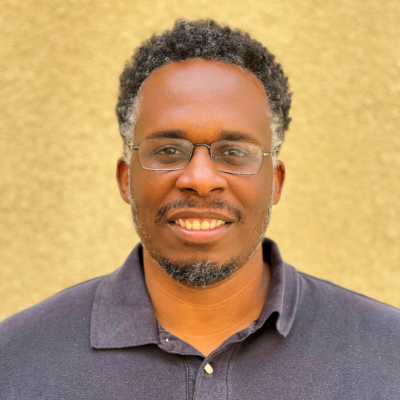James Woodson: It has been a seven-year journey. The seed form of the network began after the flashpoint moment of the Trayvon Martin killing in 2014 and Mike Brown in 2015. A lot of energy and activism took place during that time and we wanted to capture the energy and put infrastructure around it to make sure that it was sustainable.
We didn't want it to be a flashpoint moment that came and went. We wanted organizations to be stronger. We wanted organizing to be more robust.
California Calls, which incubated the California Black Power Network, formed what was called the African American Civic Engagement Project in 2016. It was a three-year project and the idea was to take twelve local organizations and train them to do integrated voter engagement. Essentially, how to run large-scale voter engagement programs where you call, text and door-knock voters, but then take the leads you got from those programs and integrate them into the day-to-day work of local organizations. My colleague Kevin, who is now our Associate Director, and I ran that project with support from California Calls staff and infrastructure.
We did that work for three years and the purpose was to build each individual organization’s capacity and power to do that work. We didn’t seek to force organizations to work together. But people in the cohort started to look across the table and saw that they had a lot of similarities, shared interests and values. So, they started to dream about working together beyond the three-year project.
We organized a three-day visioning session to explore what an independent, Black, community-focused network could look like. We came up with some plans, but at the end of the three years, we felt that we weren’t yet ready to launch. There were only 12 groups at the time and we knew that there were other groups in the ecosystem that needed to be brought into this work. Plus, we knew that we needed a bigger team, besides just Kevin and me, to launch a successful independent organization.
In the meantime, our groups identified census and redistricting as important issues to take on. We transitioned the African American Civic Engagement Project into what became the California Black Census and Redistricting Hub. We went from 12 groups to 35 groups in the Black Hub during that time. The census and redistricting work ended up being a four-year project. We became the state's official contractor to do outreach to Black communities throughout the state to encourage people to fill out the census and we took on redistricting because we always saw census and redistricting as a two-part fight. It was not only important to count Black folks to bring funding to our communities; we also had to make sure that they had political representation.
So we brought on demographers and data folks to help us draw maps that we could advocate for and submit to the state redistricting commission that was redrawing lines on the state level.
During census and redistricting, we continued planning for an independent organization.
And then, the summer of 2020 happened. In a lot of ways, it reminded us of the energy that kicked things off in 2014/2015. It was an opportunity to build infrastructure around a moment in time to make this work sustainable.
Anthony Thigpenn, who is the president of California Calls, engaged with philanthropy and other folks and the California Black Freedom Fund emerged out of those conversations. It is a five-year, $100 million pooled fund specifically for Black power building. Three networks were supported out of that effort and we were one of them. The funding that we received was for us to officially transition the California Black Census and Redistricting Hub into this sustainable network.
[Read California Black Power Network's final redistricting report.]

